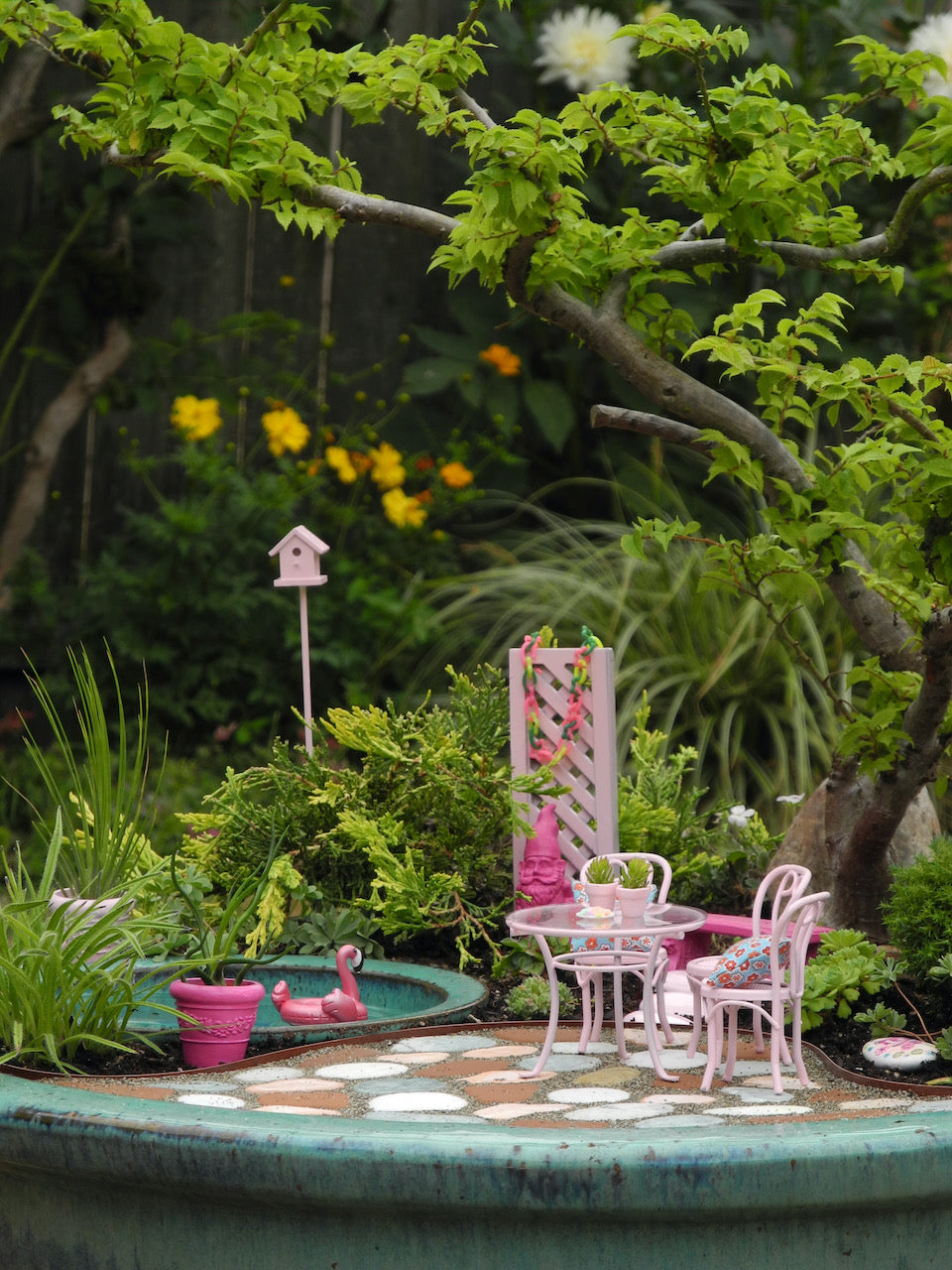- Regular Price
- $19.99
- Sale Price
- $19.99
- Regular Price
- $19.99
- Unit Price
- per

The term ‘broadleaf’ means that the plants have leaves, as opposed to needles like a pine tree. All of our miniature garden broadleaf trees and shrubs are for outdoors but the Boxwoods can be grown indoors for the winter with extra added light, (use a grow bulb.)
There are two types of broadleaf trees and shrubs: evergreen and deciduous.
Evergreen means just that - the leaves stay green and stay on the tree throughout the year. There will be times when the tree gently "exfoliates" naturally, depending upon the tree it may happen in the spring, fall or winter - which really means you'll see the odd leaf or three turn yellow and slough-off the branch.
Evergreen broadleaf examples for miniature gardening are Boxwoods, some Cotoneasters and Japanese Holly.
Deciduous means that the leaves will turn color, drop in autumn and come back in the spring. This allows the tree to go dormant and rest for the winter.
Deciduous examples for miniature gardening are Elms (Ulmus,) Willow (Salix,) and Spirea.

Broadleaf trees are a great texture to think about for your miniature garden. If all your plants in your mini garden have small leaves and a fine texture, they will blend together and look like a sketchy mess.
By adding the “broad” texture of actual leaves to the design, (as opposed to the needles of our conifers,) it will give definition to each plant – definition meaning where you can see where the plant-texture starts and stops in the overall design. In other words, you can discern each plant and tree when you look at the garden and it doesn't all blend together visually.
By mixing up the foliage textures, it will make the design more appealing.
SUMMARY:
Mix-up the textures in your mini garden design: combine broadleaf plants with the dwarf and mini conifers by either matching the colors, or complementing the colors, for a professionally designed look. Just be sure to match the cultural requirements first, then consider the esthetics.

Above: The Jacqueline Hillier Elm (behind the flamingo) is one of our favorite broadleaf trees for the miniature garden. Same tree as the photo above, taken about 10 years apart.
Broadleaf trees and shrubs tend to be a little more forgiving than conifers, generally speaking, because they can push-out new leaves once the tree recovers from whatever stress it’s been in. (Some conifers don’t grow-back their foliage after a stressful event.) But here are some general details to get you started:
- Watering: Most broadleafs that we use for our miniature gardens would prefer to soil to dry out to damp before watering again. This is to avoid overwatering as they "don't like their feet wet" all the time. Containers should have a drainage hole.
- Light: Most broadleafs that we use for our miniature gardens enjoy full, cool sun (eastern sun,) or a part-sun spot with at least 5 to 6 hours of sun. When planted in-ground, the trees have more tolerance to the hot afternoon sun because the earth can keep the roots cool.
- Soil: Basic potting soil with no added fertilizers nor water-retaining polymers is perfect for containers. Soil for in-ground may need some research depending upon the condition of the soil already there, and the type of tree you are planting.
- Pruning: Always cut just above a set of leaves to hide the cut mark. In a miniature garden, a hard cut can really stand out. Hard pruning is usually done in winter before the spring growth spurt. Only hard prune if you know what you are doing. (More pruning info in our Miniature Garden Society.) But if you have a wayward branch sticking out of the overall canopy, cut it off, back into the canopy-shape, just above a set of leaves.
Like this? Then you may love our Mini Garden Gazette Newsletter delivered to you inbox almost every week. Join us here.

0 comments